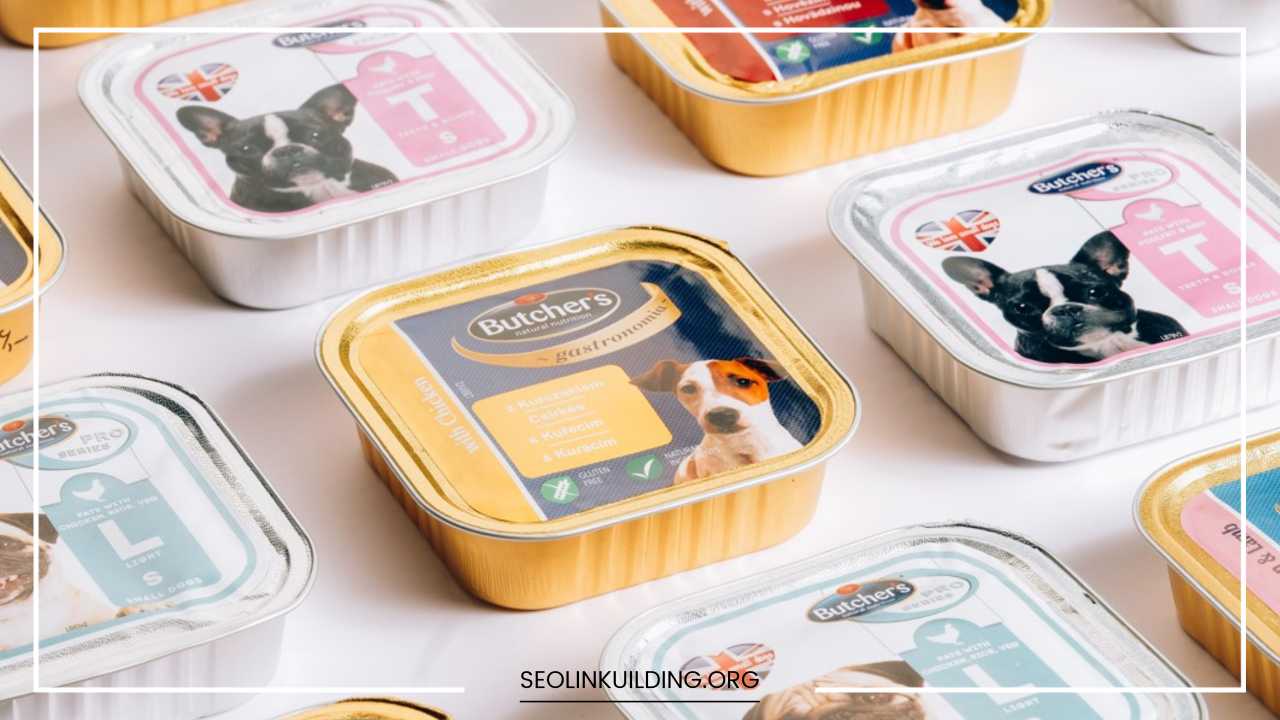Make ‘Em Bark with Joy: Creative Pet Marketing Campaigns

Pet Marketing Campaigns
Creative and Successful Pet/Animal Marketing Campaigns Examples: Capturing Hearts and Driving Sales
The pet industry is a juggernaut. In the US alone, pet owners showered their furry (or feathery, or scaled) companions with a staggering $103.6 billion in 2023 [Pet Industry Statistics]. With such a vast and passionate market, standing out requires innovative and impactful marketing campaigns.
This comprehensive article explores successful pet marketing campaigns that leveraged various strategies to capture hearts and drive sales.
We’ll delve into different campaign types, showcasing the power of emotional connection, humor, social media engagement, cause-related initiatives, and even influencer marketing with a “pawsitive” twist.
Emotional Connection: Pets as Family, Not Possessions
The days of viewing pets as mere companions are long gone. Today, people consider their pets cherished members of the family, and pet marketing campaigns that tap into this emotional bond resonate deeply. Here are two prime examples that tug at the heartstrings:
-
Pedigree’s “Adopt, Don’t Shop” Campaign: This long-running initiative by Pedigree, a popular dog food brand, champions pet adoption over buying from breeders or pet stores. Their heartwarming commercials featuring shelter animals finding loving homes not only promote adoption but also solidify Pedigree’s image as a brand that cares about animal welfare.
- Impact: Pedigree’s campaign has demonstrably increased pet adoption rates. A 2017 study by the Association for Pet Product Manufacturers (APPMA) found that 70% of pet owners reported being influenced by adoption advocacy campaigns when choosing a pet [APPMA: 2017 National Pet Owners Survey].
-
Purina’s “Because of You” Campaign: Purina, another major pet food brand, struck a chord with their “Because of You” campaign. These touching videos showcased the everyday moments of joy and companionship shared between pets and their owners, highlighting the positive impact pets have on our lives. One particularly moving video features a young girl with autism finding solace and social connection through her bond with her therapy dog.
- Engagement: The “Because of You” campaign garnered immense online engagement. The heartwarming videos received millions of views and shares across social media platforms, fostering a sense of community among pet owners.
Humor: The Lighter Side of Pet Ownership
Humor is a powerful marketing tool, disarming audiences and creating a positive brand association. Pet campaigns that make us chuckle are highly memorable. Here’s how some brands used humor effectively:
-
Iams “Smarter Barker Challenge”: This interactive campaign by Iams, a pet food company, took advantage of the popular “Canine IQ” trend. Dog owners were invited to participate in online challenges that tested their furry friend’s intelligence. Lighthearted challenges included tasks like fetching specific toys or navigating an obstacle course. The campaign’s success stemmed from the user-generated content aspect. Owners shared videos of their dogs attempting the challenges, sparking engagement and brand awareness.
- Reach: The “Smarter Barker Challenge” went viral, reaching millions of pet owners on social media platforms like YouTube and Facebook. The user-generated content aspect further amplified the campaign’s reach, as dog owners eagerly shared their pups’ attempts.
-
Royal Canin’s “Spoiled Alert” Campaign: Royal Canin, specializing in premium pet food, launched a playful campaign highlighting the lengths pet owners go to pamper their companions. The campaign featured humorous videos portraying owners giving their pets extravagant “spoiled” treatments, like spa days with cucumber eye masks or miniature chef-prepared meals. The campaign cleverly promoted Royal Canin as a key part of a pampered pet’s life by positioning their food as a premium indulgence.
- Brand Positioning: The “Spoiled Alert” campaign successfully positioned Royal Canin as a brand for pet owners who consider their companions valued members of the family and are willing to invest in their well-being and happiness.
Social Media Engagement: The Power of the Pawsome Post
Social media platforms are a goldmine for pet marketing. With millions of pet owners actively sharing photos and videos of their furry (or feathery) friends, these platforms offer a unique opportunity to build brand awareness and community. Here are some campaigns that thrived online:
-
BarkBox’s “#MyBarkBox” Campaign: BarkBox, a subscription service for dog toys and treats, encourages customer engagement through their “#MyBarkBox” hashtag. This allows owners to share photos of their pups enjoying BarkBox goodies, creating a vibrant online community and showcasing product satisfaction. BarkBox cleverly utilizes user-generated content to promote their brand and build trust with potential customers who see genuine excitement from existing subscribers.
-
Community Building (Continued): The “#MyBarkBox” campaign fosters a strong sense of community among dog owners. BarkBox frequently reposts customer photos, creating a space where pet parents can connect, share experiences, and build relationships. This fosters brand loyalty and encourages new customers to join the “pack.”
-
Greenies’ “Feline Frenzy” Campaign: Greenies, a brand of dental chews for cats, launched the “Feline Frenzy” campaign on Instagram. They partnered with cat influencers – social media personalities with large followings dedicated to cats – to post engaging videos of cats interacting with Greenies products. This influencer marketing strategy tapped into a relevant audience (cat owners) and generated excitement for the brand. Greenies ensured the influencer content was authentic and engaging, showcasing cats enjoying the dental chews in a natural and playful way.
- Influencer Marketing: The “Feline Frenzy” campaign demonstrates the effectiveness of influencer marketing in the pet industry. By partnering with trusted cat influencers, Greenies was able to reach a wider audience and leverage the influencer’s credibility to promote their product.
Cause-Related Initiatives: Giving Back with a Wag
Consumers are increasingly drawn to brands that support worthy causes. Pet marketing campaigns that integrate social responsibility resonate with this trend and create a positive brand image. Let’s explore two impactful examples:
-
Beneful’s “Dream Dog Park” Campaign: Beneful, a dog food brand, partnered with DoSomething.org, a non-profit organization that empowers young people to create positive change, to launch the “Dream Dog Park” campaign. They encouraged dog owners to vote for their city to win a grant for a new or renovated dog park. This campaign not only promoted Beneful but also addressed the importance of dog-friendly spaces and community building. Beneful went beyond simply donating money; they actively engaged their audience in advocating for a cause they care about.
- Call to Action: The “Dream Dog Park” campaign effectively used a call to action to motivate pet owners to participate. By encouraging voting, Beneful not only raised awareness about the campaign but also fostered a sense of community ownership over the initiative.
-
The Humane Society of the United States’ “#MillionCatChallenge”: The Humane Society of the United States (HSUS) tackled the serious issue of cat overpopulation with their “#MillionCatChallenge” campaign. They leveraged social media to encourage spaying and neutering of cats, utilizing adorable cat photos and infographics to spread awareness and generate online support for their cause. The campaign’s lighthearted approach, combined with informative content, resonated with cat lovers and helped educate the public about responsible pet ownership.
- Social Impact: The “#MillionCatChallenge” achieved significant results. The HSUS reported a 20% increase in website traffic related to spaying and neutering resources during the campaign period. This demonstrates the power of social media to raise awareness and promote positive change.
Beyond the Click: Multi-Channel Marketing for Pet Products
While social media is a powerful tool, successful pet marketing campaigns often leverage a multi-channel approach. Here are some additional strategies to consider:
-
Television Commercials: Well-crafted television commercials can evoke strong emotions and create lasting impressions. This approach can be particularly effective for campaigns that focus on the emotional connection between pets and owners.
-
Print Advertising: Strategic use of print advertising in pet magazines or local publications can reach a targeted audience. This can be a good way to promote new products or services.
-
Public Relations: Building relationships with pet bloggers, journalists, and animal welfare organizations can generate positive press coverage and brand awareness.
-
Experiential Marketing: Interactive events or pop-up shops can create a memorable brand experience for pet owners and their companions.
A Tailored Approach: Targeting Specific Demographics
When crafting a pet marketing campaign, it’s crucial to consider your target audience. Different demographics may respond better to certain messages or channels.
-
Millennials: This tech-savvy generation is a major force in the pet industry. Millennial pet owners are likely to be active on social media and receptive to influencer marketing campaigns.
-
Gen X: This generation prioritizes practicality and value. Marketing messages that focus on product benefits and affordability may resonate with them.
-
Baby Boomers: Baby boomers are often willing to spend more on their pets. They may be interested in premium pet food or pet care services.
-
Pet Parents with Specific Needs: Consider marketing to pet parents with specific needs, such as those with senior pets or pets with special dietary requirements.
By tailoring your message and channel selection to your target audience, you can ensure your pet marketing campaign resonates with the right people.
Final Word: The Future of Pet Marketing – Trends to Watch
The pet industry is constantly evolving, and so too must pet marketing strategies. Here are some key trends to watch in the future:
- Personalization: Consumers expect a personalized experience across all marketing channels. Pet marketing campaigns can leverage data and analytics to tailor messaging and product recommendations to individual pet owners.
- The Rise of E-commerce: Online pet product sales are booming. Pet marketing campaigns need to effectively target online shoppers and ensure a seamless e-commerce experience.
- The Power of Video Marketing: Short-form video content, like that popular on TikTok and Instagram Reels, is becoming increasingly important for pet marketing. Engaging and creative video content can capture attention and promote products in a dynamic way.
- The Integration of AR/VR: Augmented reality (AR) and virtual reality (VR) technologies offer exciting possibilities for pet marketing. Imagine using AR to virtually try on pet accessories or VR to offer a glimpse into a new pet food’s ingredients.
- Focus on Sustainability: Consumers are increasingly concerned about the environmental impact of pet products. Pet marketing campaigns that highlight sustainable practices and eco-friendly products will resonate with this growing trend.
By staying ahead of these trends and leveraging creative and impactful marketing strategies, pet brands can capture hearts, drive sales, and build lasting loyalty in this ever-growing market.
Remember, the most successful pet marketing campaigns tap into the profound emotional bond between pets and their owners, while also offering practical value and a touch of humor.
By keeping these principles in mind, pet brands can develop campaigns that resonate with pet parents and ensure their furry (or feathery, or scaled) friends continue to live the good life.













